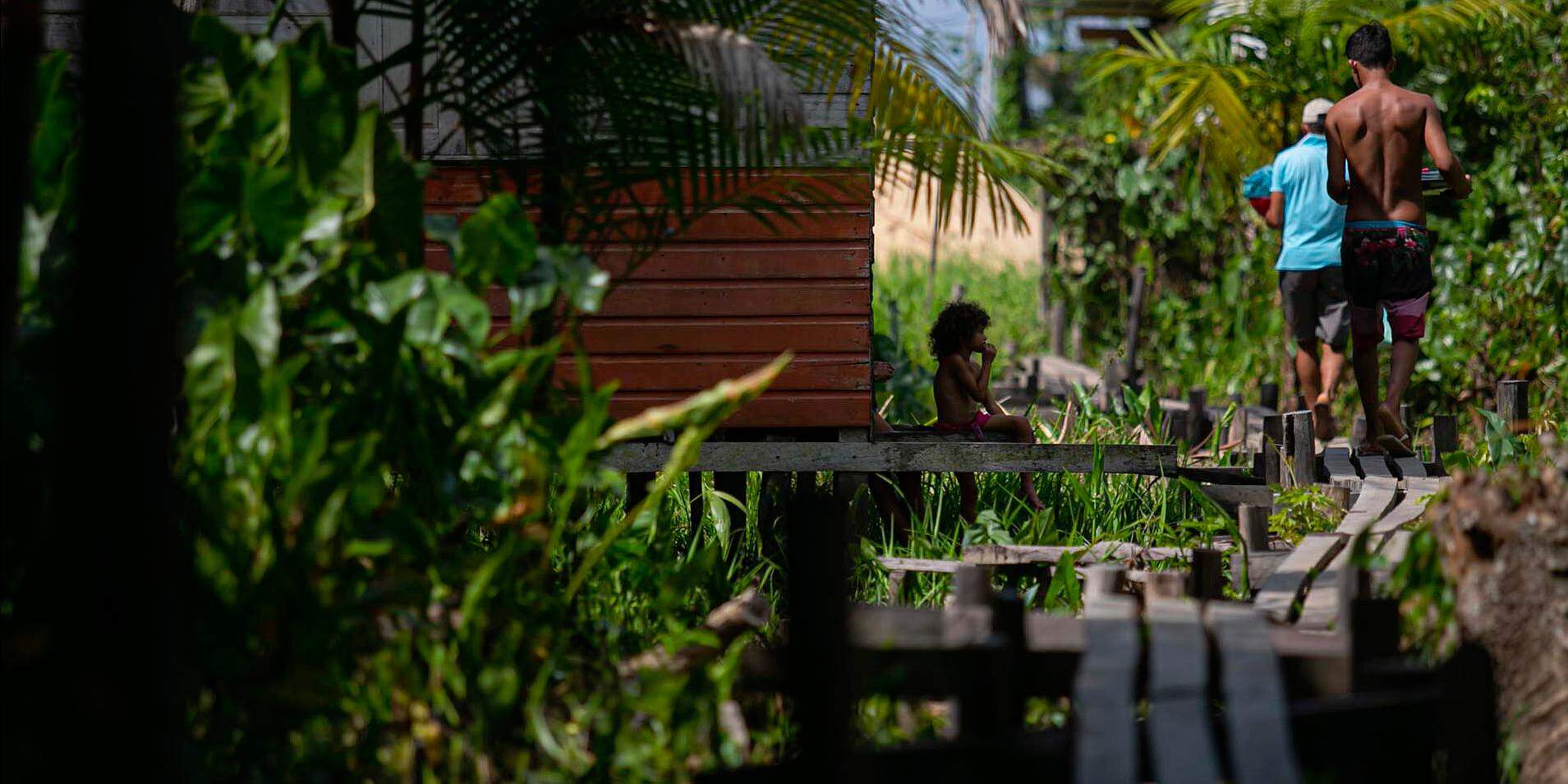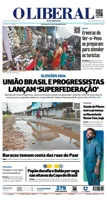Marajó: a socioeconomic challenge of Amazonian stature
A population of over half a million people live a new expectation of public and private investments with a view to driving forward the development of a region of almost 50 thousand km² still marked by poverty and inequality, with employment and sustainability
Colorful wooden houses, small boats, images of lush beaches, buffalos, forests and open fields ready for investments in the productive sector. The portrayal of the Marajó archipelago, in the Brazilian Legal Amazon, is reproduced at a distance of around 11,500 kilometers. This week, wealthy Dubai, capital of the United Arab Emirates will shelter a small piece of Marajó, one of the Brazilian regions that encompasses the challenge of developing the Amazon, generating jobs and income for the population, without giving up the necessary and constant search for sustainability.
During the Expo Dubai, an event that brings together investors from all over the world and where emerging economies present business opportunities to attract new initiatives, Brazil decided to invest precisely on Marajó. A part of the Brazilian Pavilion gained an area dedicated exclusively to the Marajó archipelago, strengthening the expectation of achieving international contribution by way of resources, thus generating new business for the region. Marajó, famous for its legends and “enchantments”, is now officially "embraced" at an international event across the country. More than delighting people from all over the world with the sights, sounds and flavors (a cocktail with the region's typical cuisine to foreign businessmen is included as a complementary touch), the federal government is investing heavily on the action to generate far beyond visual propaganda and handshakes: the main focus is to get support for the Program “Embrace Marajó”, by means of new enterprises with potential for generating employment, income and, in fact, begin able to change a scenario marked by poverty and misery for decades.
The Marajó archipelago, located in the northern portion of the Brazilian legal Amazon, synthesizes the challenge of overcoming the population’s poverty. From different perspectives, it is clearly witnessed how much the 16 Marajoara municipalities really need to be embraced, especially by private and public investments in logistics, infrastructure and conditions to generate its own development.
Marajó's GDP per capita is three times lower than the national reference
One of the indicators used in macroeconomics to classify the wealth or poverty of a region is the GDP per capita. Although it can be questioned, as it does not faithfully represent the real picture of a region and its social inequalities, the consolidated data of the Gross Domestic/National Product (GDP) is still an important and widely used macroeconomic indicator.
 (Tarso Sarraf / O Liberal)
(Tarso Sarraf / O Liberal)
In a nutshell, GDP represents wealth, that is, the sum of goods, public and private investments and services produced by a given geographic location in a consolidated period.
Following the same reasoning, GDP per capita (or per person) indicates the total sum of GDP divided by population, being an indicator that allows a more qualified picture of how much a region can be economically "rich" or poor".
“No Brasil e fora tem muita gente que não entende ainda. ‘Que discriminação é essa que não pode ser Marajó?’, ‘É para continuar um território esquecido abandonado?'" - Damares Alves, ministra da Mulher, da Família e dos Direitos Humanos (MFDH).
According to 2018 data from the Instituto Brasileiro de Geografia e Estatística (IBGE) [Brazilian Institute of Geography and Statistics], the average Brazilian GDP per capita was R$ 31.8 thousand. The average for the Brazilian Legal Amazon, composed of nine states, adds up to a GDP of BRL 623.1 million, resulting in a per capita GDP of BRL 21.7 thousand that year.
 (Tarso Sarraf / O Liberal)
(Tarso Sarraf / O Liberal)When the cutting of the research has the Marajó archipelago as reference, adding up the 16 constituent municipalities of the region, the numbers drop drastically. The region has a GDP per capita of only BRL 8,300 per year, which, in the period of one year, represents around BRL 700 reais per month for each citizen of Marajó.
To demonstrate the situation even further, it is only necessary to look at the same GDP data from 2018, from IBGE. Among the 27 Federation Units of the country, Pará occupied the 20th place in relation to GDP per capita. If the Marajó region was a state, it would be in last place, well below Maranhão, in 27th place, with per capita GDP of R$13.9 thousand.
Also because of the impact of the economy, the archipelago's social indicators are among the lowest in the country. According to the Atlas of Human Development in Brazil (UNDP), in 2010 - based on the last Census carried out in the country - of the 50 worst Human Development Index (HDI) in Brazil, eight are in Marajó, with Melgaço (0.41) being in last position in the national ranking.
In fact, all 16 municipalities have IDHM – Índice de Desenvolvimento Humano Municipal [Municipal Human Development Index] below the national average, which is 0.72. The lowest is from Melgaço (0.41), followed by Chaves (0.453). The highest one among Marajoara municipalities is Soure, with 0.61, still below the national average and state averages [the latter corresponding to 0.64]. It is not by chance that Soure is the municipality - together with Salvaterra - that most attracts tourists to the region, offering the best logistical transport infrastructure.
Health indicators also point to great inequalities between Marajó and the rest of the country - and poor figures even in relation to the Amazon itself, which has serious social indicators. Infant mortality in the region reaches 15.4 per thousand inhabitants born alive, while regarding the country as a whole this average rate is 12.8. In terms of hospital beds per thousand inhabitants, data from the Ministry of Health reveal that the region has an index of less than one per thousand inhabitants (0.8), while the national average is 2 per thousand inhabitants. Finally, figures from Sistema Único de Saúde (SUS) [Unified Health System] reinforce the inequality: according to data from 2019, the total expenditure on health per inhabitant in the country was R$ 816.9 on average. In Marajó, this amount drops to R$ 386.6.
Concerning education, a survey carried out by the Ministry of Education exhibits alarming results: only Salvaterra (9%) shows an illiteracy rate below the national average, which is 9.4%. All other municipalities have a higher illiteracy rate, with a negative highlight for Melgaço, with 38.5% of illiterate population.
Program brings together initiatives to overcome challenges
In a recent interview with Grupo Liberal, Damares Alves, Ministra da Mulher, da Família e dos Direitos Humanos (MFDH) [Minister for Women, Family and Human Rights], reinforced the commitment that the federal government's portfolio has shown towards the “Embrace Marajó” Program, which brings together around 140 actions ensuing from different areas to fight poverty in the region and attract investments to generate jobs. “In Brazil and abroad, there are many people who still don't understand. I publicize this program all over the country. We are presenting it in other countries. People ask 'Why Marajó?', 'Why did you choose Marajó?' My answer is 'Why not Marajó?', 'What underlies this discrimination against Marajó?', 'Is it supposed to remain as a forgotten and abandoned territory? But we did have some elements that led the government of President Bolsonaro to choose the territory as an experimental management of public policies”, she said.
 (Willian Meira)
(Willian Meira)According to minister Damares, there is a great effort towards the diffusion of the program in significant international events, such as Expo Dubai. “We hope to prove we have integrated public policies, besides management transparency and governance. The municipality of Melgaço - Marajó has the lowest HDI [Human Development Index] in Brazil. We chose a forgotten territory. A lot of people used to stress: it is too difficult to do anything there”, she says. For the minister, what underlies that kind of mind-setting is a complex logistic reality which prevents the development of the region and, it becomes necessary to face that reality to transform it. In that direction, the program has incorporated some infrastructure projects such as, a highway system to interconnect the archipelago and the coast. “This is the most challenging issue. If we can make it work in such a remote place, we can make it work anywhere in Brazil. That’s why we selected Marajó”, explains Damares.
From Marajó to the world
During the Expo Marajó event, a portfolio comprising eight projects to be carried out in the region will be presented, aiming to attract investments. The estimate is that the portfolio could collect about R$ 15 million Reais in funds, which would be used in the management and improvement of economic activities such as, the açaí berry productive chain, buffalo breeding, support to family farming by traditional peoples and communities, food production, wind renewable electricity production, fish farming …all destined to fight child malnutrition.
 (Divulgation / Apex Brasil)
(Divulgation / Apex Brasil)The initiative and implementation of these projects are within the Federal Government ‘s remit, and put into practice by the Women, Family and Human Rights Ministry, in partnership with Serviço de Apoio às Micro e Pequenas Empresas (Sebrae) [Brazilian Micro and Small Business Support Service], Federação de Agricultura e Pecuária do Pará (Faepa) [Agriculture and Livestock Federation of Pará], Federação da Indústria do Estado do Pará (Fiepa) [Industry Federation of Pará state] and Federação do Comércio de Bens, Serviços e Turismo do Pará (Fecomércio-Pa) [Goods, Services and Tourism Commerce Federation of Pará].
During the event, the exposition includes cultural presentations, tasting of typical flavors from Marajó (buffalo cheese, and other agriecological products), photograph exhibitions, and debates about the ongoing actions carried out by the “Embrace Marajó” program.
In addition, projects aiming to improve local infrastructure are being presented during opportunity meetings, such as the Anel Rodo-Hidroviário Project [combining road hydro-way transport] and Ponte Marajó Project [Marajó bridge] connecting Belém-Marajó / Macapá-Oiapoque, which intends to be a prominent factor in fostering regional development and socio-economic expansion in the region.
Development route
Connecting the cities of Barcarena, Ponta de Pedras and going as far as the municipality of Afuá, this highway project is intended to measure 295 kilometers long and aims to link the Marajó archipelago to the rest of the country by land. It is the major infrastructure project to be presented in Dubai.
De repente todo o mundo se voltou ao Marajó, que é uma ilha linda e maravilhosa, mas que está parada no tempo" - Liana Pires Teixeira, produtora rural de Soure.
The idea of promoting road connection has been planned by the productive sector from Pará for some time, however hindered due to the scarcity of demanded resources. Now, after the Federação da Agricultura e Pecuária do Pará (Faepa) officially presented it, the project is included among the federal government actions for the region.
“Currently, we have the lowest HDI in the country and that makes me feel deeply sorry. We are taking advantage of this moment when the federal government is showing some special care about Marajó, furthermore, the state government has also signed a law offering different tax charges to people who settle down in the region. So, the business entities have got together in order to foment development here”, highlights the president of Faepa, Carlos Xavier.
 (Tarso Sarraf / O Liberal)
(Tarso Sarraf / O Liberal)Tourism and qualification
In order to enhance the tourism industry in Marajó, the federal government is going to launch some initiatives to improve the qualification of infrastructure in the region. One of them consists in building, on the coast of Paracauari river (in the city of Salvaterra), integrated structures to better run the local bioeconomy, tourism, business and leisure facilities. Those actions intend to value the region, creating job positions and generating income. The enterprise is budgeted in R$ 10 million Reais.
The improvements in infrastructure and the qualification of working people who serve the beach areas in Marajó are going to be discussed in the meetings during the event in Dubai. The idea is to plan models of structured beaches, considering the guidelines of the Bandeira Azul program [Blue Flag], promoted by the Tourism Federal Department, which stablishes standards of socioenvironmental sustainability and improvements in the quality of the available services, leading to an increase of the competitive potential of the beaches in Marajó, as touristic products. The project budget for the investment is R$ 1 million Reais.
Valuable production
Among the many different kinds of products commercialized, Carlos Xavier says that the major demand nowadays is from the European market for the Marajó búfala cheese [female buffalo]. He also indicates the buffalo beef, which has many qualities making it more valued than cattle beef. “Another item is the pirarucu from Marajó [a kind of fish], but we also have available areas for rice crops, Marajoara pottery and tourism. When we show off all that economic potential to the world, it is not going to be difficult to get investments”, he bets.
 (Sidney Oliveira / O Liberal)
(Sidney Oliveira / O Liberal)Liana Pires Teixeira, a rural producer in Soure – Marajó, 64 years old, works on cattle raising and horse breeding. She is thankful to, as she calls it – the “enchantment” of the minister Damares Alves by Marajó, however, she also criticizes the government due to the long-term problems faced in the region. “Suddenly, the world turned their eyes to Marajó, it really is such a beautiful and wonderful island, though it has ‘stopped in time’. The intended changes depend on us – producers – but it also it depends on the government readiness to move the island and its municipalities from the stone age into the 21st century, because no one is able to do that without support. If you try to achieve these goals on your own resources, it is going to take forever”, she states.
Palavras-chave
COMPARTILHE ESSA NOTÍCIA




























